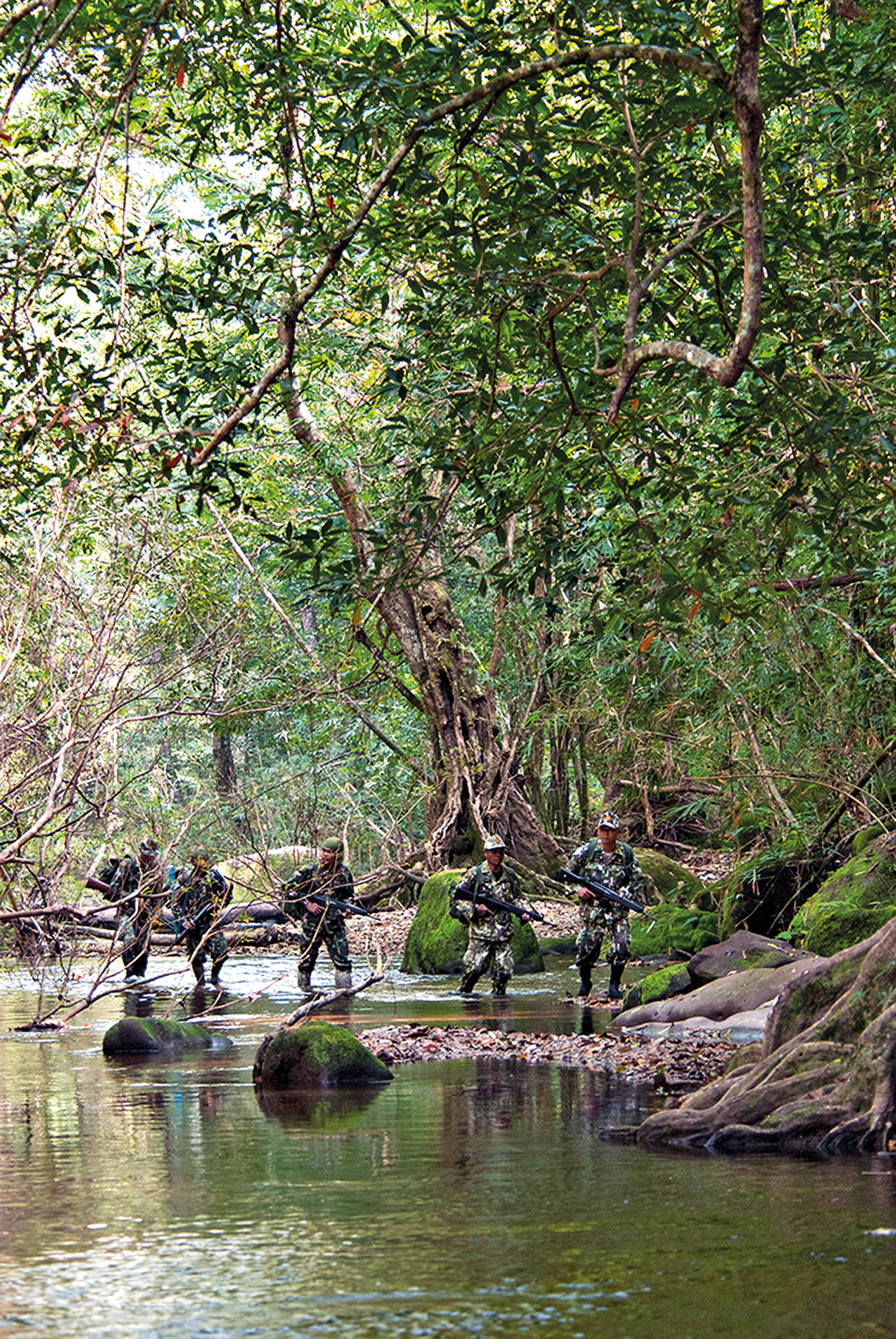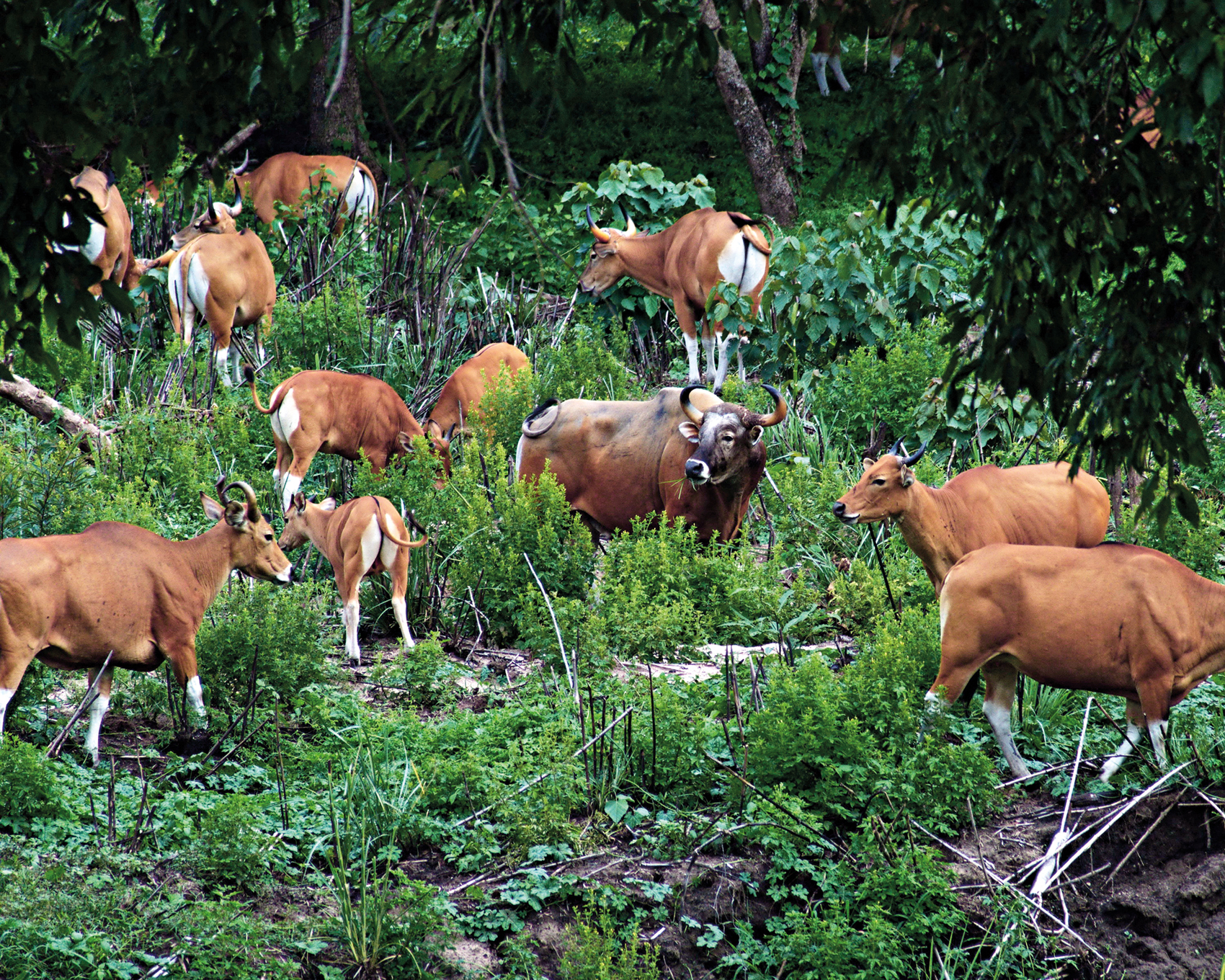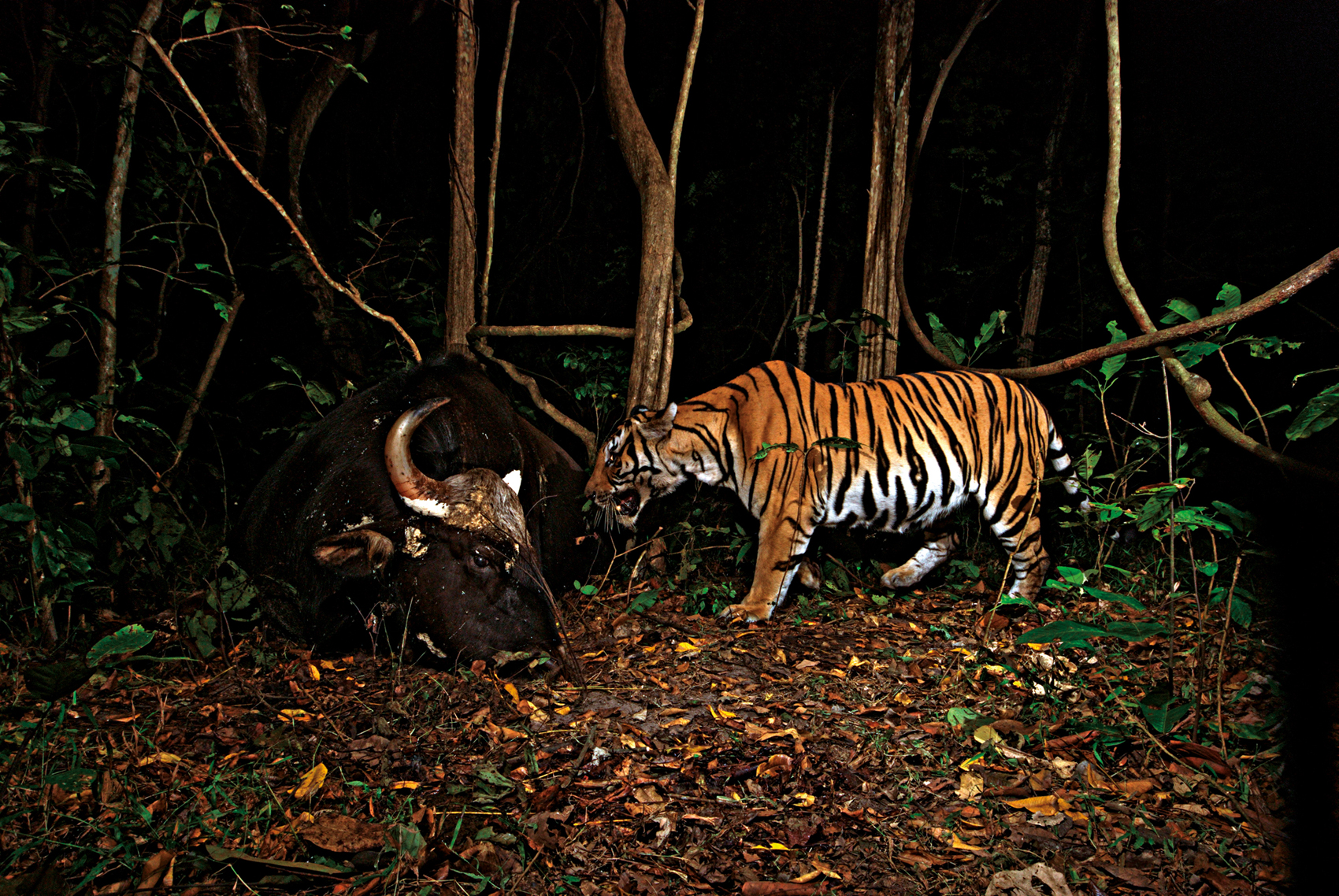Smart Patrolling
First published in Sanctuary Asia,
Vol. 40
No. 10,
October 2020
By Nirmal Ghosh
Thailand has been in the wildlife conservation news lately over the recovery of its tiger population. This is a rare success in mainland Southeast Asia, where the tiger has vanished only in the last decade – or at least become functionally extinct – from Laos, Cambodia and Vietnam.

Thailand’s Western Forest Complex (WEFCOM), the largest remaining forest tract in mainland Southeast Asia, has implemented SMART Patrols to better protect its fauna.
Photo:Kwanchai Waitanyakarn, WCS Thailand
This year, 79 individual tigers were recorded on hidden cameras in the protected Thungyai-Huai Kha Khaeng Wildlife Sanctuary, a UNESCO World Heritage Site, at the core of Thailand’s Western Forest Complex (WEFCOM).
This is a 72 per cent increase from 13 years ago, and a sign that a basic, fundamental tool of wildlife conservation – patrolling the forest – works.
Covering an area of about 18,000 sq. km. and overlapping the international border into Myanmar’s Tanintharyi (where sadly, though the forest is one of the largest in the country, the status of wildlife is poor), Thailand’s WEFCOM is the largest remaining forest tract in mainland Southeast Asia.
WEFCOM consists of 17 contiguous Protected Areas (PAs) – 11 national parks and six wildlife sanctuaries. The tigers were recorded in the core of the vast landscape – Huai Kha Khaeng (2,780 sq. km.), Thungyai Naresuan West (2,118 sq. km.), and Thungyai Naresuan East (1,572 sq. km.).
Poaching is the main threat in Thailand, where almost all remaining wildlife remains only in PAs. Forests outside PAs, or forests with lower levels of protection, are often virtually empty of wildlife.
“Thailand has been considered an anthropocene country for decades with the intact forest ecosystem remaining only inside PAs, comprising about 18 per cent of the country area,” noted Dr. Anak Pattanavibool of the Wildlife Conservation Society (WCS) et al. in a 2019 paper. “The situation has led to severe negative impacts on large wild mammals. For instance, tigers remain only in three per cent of the country, banteng one per cent, elephants, gaur and sambar only seven per cent.”
Clearly then, the survival of wildlife depends on the PA system. But a PA without protection is essentially a paper park.

The banteng, photographed here in Huai Kha Khaeng, Thailand, is an endangered wild bovid found in the tropical forests of Southeast Asia. It is one of the tiger’s main prey species.
Photo: Kwanchai Waitanyakarn, WCS Thailand
CHANGE OF STRATEGY
That is where SMART patrols have been the key intervention to turn the tide. The SMART patrol system provides managers with a range of scientific indicators of threat frequencies and patterns, target species, and patrol effectiveness. Managers use it to adjust patrol tactics and strategy.
Importantly, it has also changed the top-down culture of wildlife management, to adaptive management based on up-to-date information from the field.
WEFCOM is also equipped with a long-term rigorous population monitoring system to show the ultimate result of protection of wildlife species, especially tigers.
“Over a decade of such an approach, tiger population has responded with an increase of 50 per cent in the core area of WEFCOM,” said Dr. Anak. “They have also dispersed to recover in the adjacent PAs. Their main prey including banteng, gaur, and sambar are also returning in various well-protected areas.”
Also, strong public lobbies and legal challenges have kept infrastructure projects that would destroy wildlife habitat, at bay.
One example is the Mae Wong dam, which successive Thai administrations have tried to revive, only to face strong opposition. Thus far Mae Wong, which is one of the dispersal areas for tigers and other threatened wildlife from Thungyai-Huai Kha Khaeng, has remained protected.
“To save endangered wildlife in an anthropocene country like Thailand requires involvement of all sectors in the society to work together under strong scientific guidance,” Dr. Anak said in his paper.

A tiger approaches its kill – a gaur – inside WEFCOM, Thailand, where SMART patrols have resulted in a 72 per cent increase (from 13 years ago) in the tiger population.
Photo:Kwanchai Waitanyakarn, WCS Thailand
Thailand’s success should be seen as an example in Myanmar (see page 88), where hopes that wildlife was still thriving in Tanintharyi have been somewhat tempered. A road from Dawei to Bangkok, which I travelled in 2015, already bisects the habitat. Tigers are hanging on by a thread in Myanmar. In the north, the Hukawng Valley National Park, which is contiguous with the Namdapha Tiger Reserve in India, has very few tigers left. The total for the entire country is estimated at less than 30. If tigers can disperse successfully from Thailand’s WEFCOM, there is a chance in the future that they could disperse even as far as Tanintharyi. Meanwhile Myanmar should see Thailand’s success as something to be emulated, before it is too late.
One can but hope.
Nirmal Ghosh, journalist, writer and wildlife conservationist, Trustee of The Corbett Foundation and a former Steering Committee member of Project Elephant, has spent many years in Thailand, and is currently based in Washington DC as the U.S. Bureau Chief for The Straits Times.




